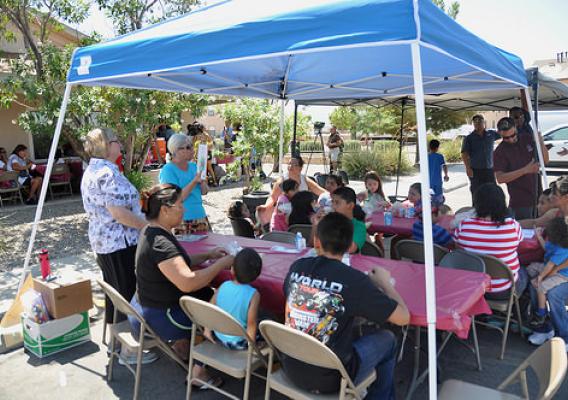The following guest blog is part of our Cafeteria Stories series, highlighting the efforts of hard working school nutrition professionals who are dedicated to making the healthy choice the easy choice at schools across the country. We thank them for sharing their stories!
By Wendy Moraskie, USDA Food and Nutrition Service
Every year the schools in Missouri’s Raymore Peculiar R II district celebrate their salad bars during “Rainbow Days.” Thanks to the staff’s efforts to use local farmers markets, students throughout the district see fresh peppers, squash, onion, zucchini, tomatoes, potatoes, eggplant, green beans, corn on the cob, peaches, apples, blackberries, blueberries, strawberries, cantaloupe, watermelon and more.
“Whatever’s in season, they’ll try it,” said District Food Service Director Colleen Johnston, “our kids are good experimenters.”
Missouri schools hold Rainbow Days celebrations and feature the abundance of bright colors at their salad bars as a way of encouraging students to eat a variety of foods. To help promote the events, schools can qualify for a $200 stipend.







